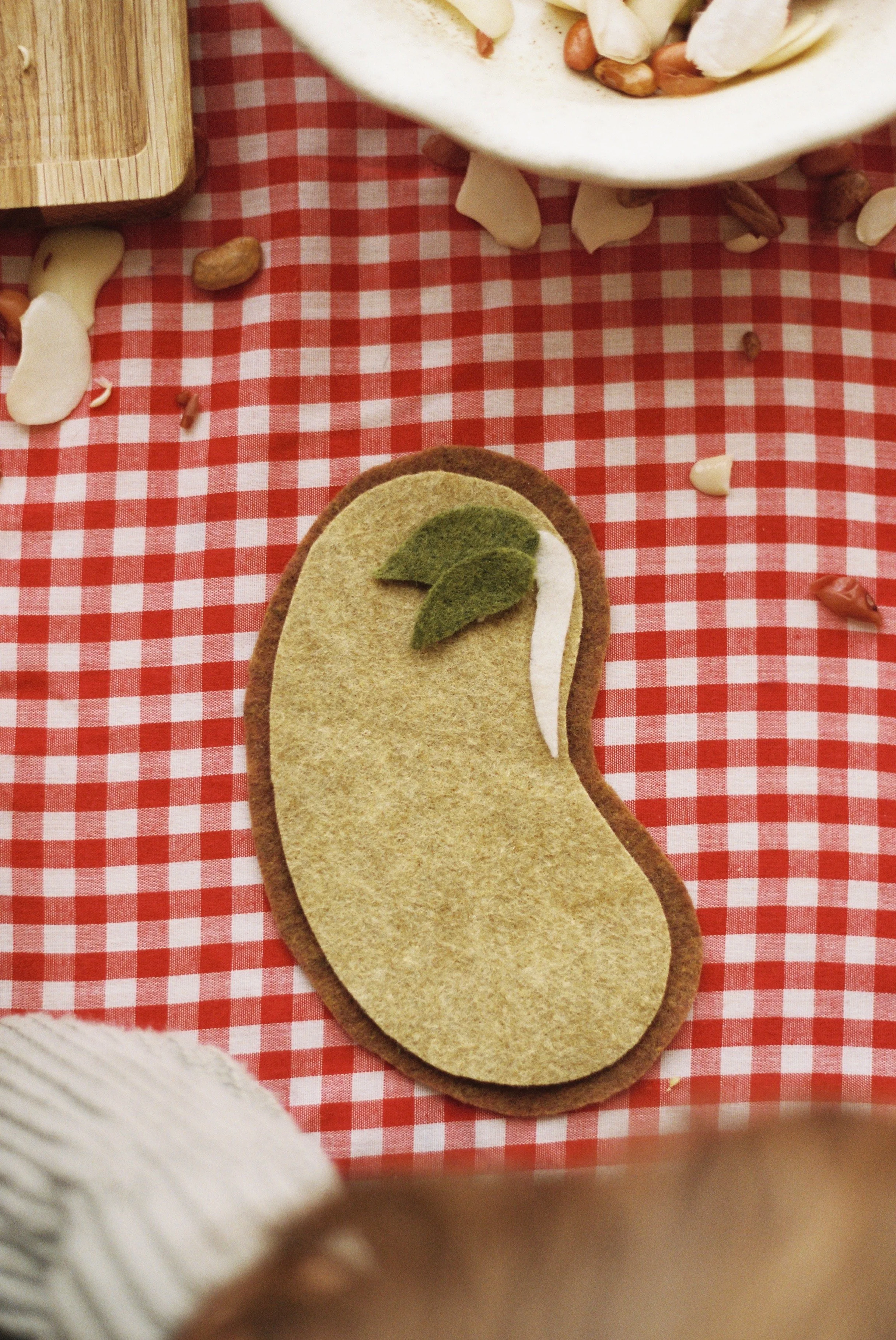
Parts of a seed
LESSON 2
Children explore parts of a seed by dissecting bean seeds and naming each part.
Variety of dried beans
Bowl or plate to dissect beans on
The book, “One Little Bean,” by Cecil Kim
The book, “A Seed Is Sleepy,” by Dianna Hutts Aston and Sylvia Long
Materials for bean diagram of choice
Diagram options:
-felt diagram
-paper cut out diagram
Materials
Gather materials for the lesson
Prepare bean diagram
Soak beans in water at least 24 hours before activity
Preparations
Present soaked beans and explain the activity to the children.
Define "dissect" in child-friendly terms, relating it to the activity.
Guide children's exploration using open-ended "I wonder" statements.
Facilitate identification of seed parts on a bean seed diagram from the story.
Supervise the assembly of a felt bean diagram, practicing seed part names.
Assist in the clean-up of the dissection activity.
Introduce and read the story "The Little Bean" to the children.
Objectives for Teachers
Children Dissect soaked beans to explore their parts.
Children understand that dissecting means taking something apart to study it.
Children engage in curiosity-driven exploration using "I wonder" statements.
Children identify seed parts on a bean seed.
Children name seed parts by assembling a felt bean diagram.
Children work with the teacher to clean up the activity.
Children discuss what happens to seeds and what they need to grow.
Objectives for Children

Collect and Connect
Play this heads or tails exercise game.
Practice singing the song “Five Tough and Tiny Seeds” By Steve Metzger Sang to the tune of “Five Little Speckled Frogs,” with the actions you came up with.
Five Tough and Tiny Seeds
Five tough and tiny seeds sat on a slender reed,
Waiting for springtime winds to blow– Woosh! Woosh!
One landed on the ground, sniffed by a happy hound,
Then there were four tough, tiny seeds.
Four tough and tiny seeds sat on a slender reed,
Waiting for springtime winds to blow– Woosh! Woosh!
One landed near a lake, beside a wriggly snake,
Then there were three tough, tiny seeds.
Three tough and tiny seeds sat on a slender reed,
Waiting for springtime winds to blow– Woosh! Woosh!
One landed near a tree, buzzed by a bumblebee,
Then there were two tough, tiny seeds.
Two tough and tiny seeds sat on a slender reed,
Waiting for springtime winds to blow– Woosh! Woosh!
One landed by a road, next to a slimy toad,
Then there was one tough, tiny seed.
One tough and tiny seeds sat on a slender reed,
Waiting for springtime winds to blow– Woosh! Woosh!
It landed on a rock, next to a watchful hawk,
Then there were no tough, tiny seeds.
Five tough and tiny seeds, blown from a slender reed,
Raindrops are falling from the sky– Drip! Drop!
With bright and warmer days, now comes the month of May,
Now it’s the time for seeds to grow.
Five seeds begin to sprout, just as the sun comes out,
What will they all turn out to be?
Growing taller by the hour, each one a different flower,
That’s what became of five tough, tiny seeds.

Activity Flow
Introduction: Begin by presenting the soaked beans to your child. Provide them with a bowl or plate and explain that today, they will be dissecting the beans. Introduce the term "dissect," explaining that it means carefully taking apart and studying something. Mention that beans are technically seeds. Let's discover what we can learn about seeds through this activity.
Dissection Exploration: Work together with your child to explore and dissect the beans. While exploring, refrain from explaining or naming each part. Instead, use "I wonder" statements to encourage curiosity and questions from your child. For instance, say, "Hmm, this piece I peeled off the bean is interesting. I wonder what that is."
After exploring the seeds, recall the bean diagram from the story in the previous lesson. Turn to the page with the bean seed diagram in "A Seed Is Sleepy." Use the diagram to identify the different parts of the seed you discovered during the dissection.
Grab the prepared felt or paper bean diagram to practice the newly gained knowledge. Follow the pattern of "I do, we do, you do." Start by demonstrating how to put it together and name each part. Then work together, and finally, let your child do it independently.
Note: Younger children or those not interested in memorizing seed parts might not be ready to assemble and name each part, and that's perfectly fine.
After assembling and naming the different parts of the bean seed, work together to clean up the activity.
Conclusion: After the activity, ask your child if they know what happens to seeds and what seeds need to grow. Tell your child that you're going to read a story about a little bean that falls to the ground. The bean is scared because it doesn’t know what is going to happen to it. Some friends come along to help the bean feel less afraid. Let’s find out how these friends help the bean and see if we can learn anything new about seeds.
Find a cozy spot to read "The Little Bean." After the story, discuss how the friends helped the bean, and what a seed needs to grow.




